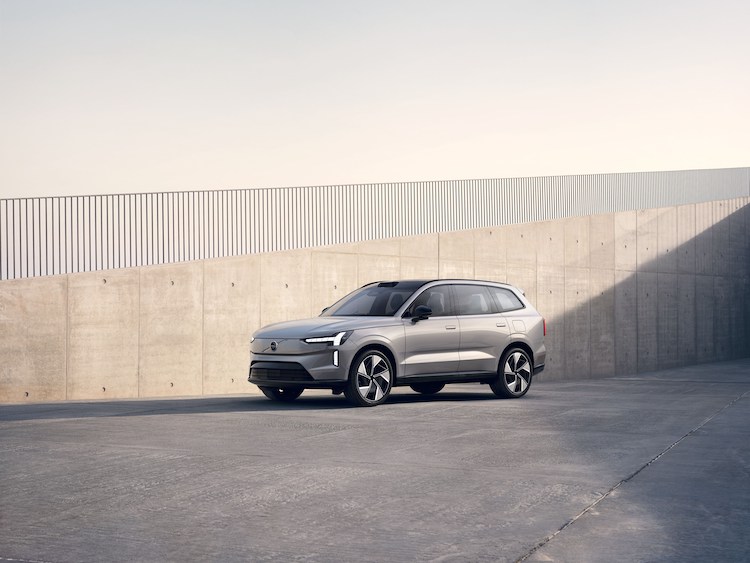
The EX90 will be initially available as a twin-motor all-wheel-drive variant powered by a 111kWh battery and two permanent magnet electric motors together delivering 380kW (517hp) and 910Nm of torque.
In this format the EX90 will deliver up to 600km of driving range on a single charge, according to the WLTP test cycle, it charges from 10 to 80% battery capacity in under 30 minutes.
The manufacturer says following the launch of the Volvo EX90, it will reveal one new fully electric car each year, in its aim to sell exclusively electric vehicles by 2030 and be a climate neutral company by 2040.
Volvo Cars New Zealand general manager Ben Montgomery says the brand is already receiving expressions of interest on its customer website from keen early adopters. He says there is a huge appetite for a proper full seven-seat electric SUV.
“We expect to deliver the first customer orders for the new EX90 in early 2024,” Montgomery says.
“The Volvo EX90 is a statement for where we are, and where we are going,” Volvo Cars chief executive Jim Rowan says.
“It’s fully electric with a range of up to 600 kilometres on a single charge, designed to further raise our safety standards, the first Volvo car to be truly defined by its software and part of a wider ecosystem, connecting to your home and your other devices. The Volvo EX90 is the start of something new for Volvo Cars in many ways,” he says.
The manufacturer says the standard of safety in the EX90 is also higher than any Volvo car before it.
“It’s designed to understand you and its surroundings to help keep you, your loved ones and others in traffic safe. It can also get smarter and safer over time, as it learns from new data and receives updates,” Volvo Cars says.
The manufacturer says the EX90 has an invisible shield of safety enabled by the latest sensing technology, inside and outside. State-of-the art sensors such as cameras, radars and lidar are connected to the car’s core computers, where NVIDIA DRIVE runs Volvo Cars’ in-house software to create a real-time, 360-degree view of the world.
“Our lidar can sense the road in front of you, whether it’s day or night, also at highway speeds. It can see small objects hundreds of metres ahead, creating more time to inform, act and avoid,” Volvo Cars says.
“The sensors also contribute to improve the reliability and overall performance of our assisted driving function, Pilot Assist, with a new steering support function while changing lanes.
“Inside, our invisible shield of safety also looks out for you. Special sensors and cameras, powered by our own in-house-developed algorithms, gauge eye gaze concentration. The technology allows the EX90 to understand when you’re distracted, drowsy or otherwise inattentive, beyond what has been possible in a Volvo car to date.
“It’ll alert you, first softly nudging, then more insistent. And if the unthinkable happens and you fall asleep or are taken ill while driving, the EX90 is designed to safely stop and call for help. It is also the first Volvo that’s hardware-ready for unsupervised driving in the future,” Volvo Cars says.
The manufacturer says the Volvo EX90 contains approximately 15% of recycled steel, 25% of recycled aluminium as well as 48kg of recycled plastics and bio-based materials, which corresponds to around 15% of the total plastic used in the car – the highest level of any Volvo car yet.
It also the first Volvo SUV with all the necessary hardware to enable bi-directional charging where the car’s battery becomes an energy supply, to power a home, other electric devices or another electric Volvo car.
Volvo Cars says it plans to make bi-directional charging available with selected markets in the future.








